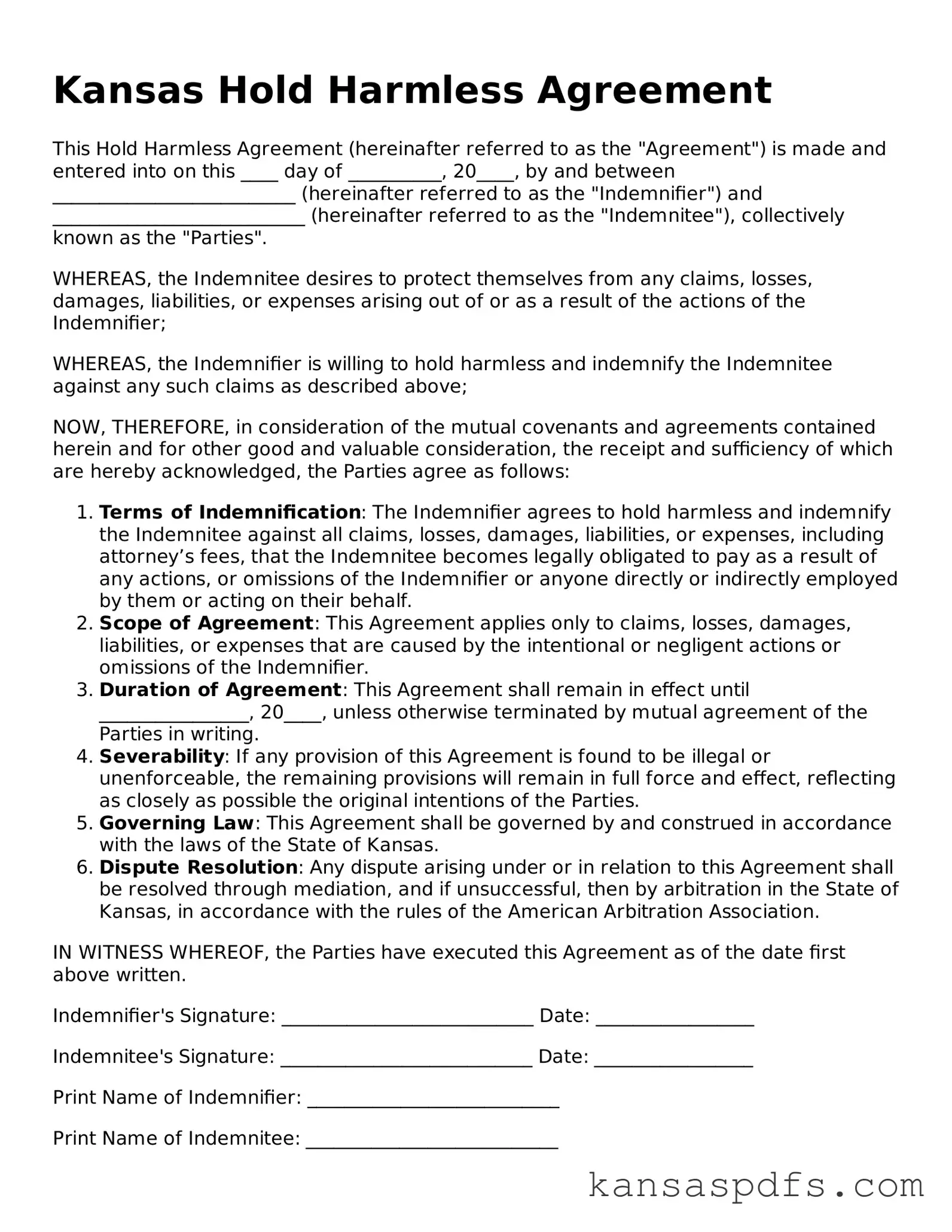What is a Kansas Hold Harmless Agreement?
A Kansas Hold Harmless Agreement is a legal document used to ensure that one party will not be held liable for the risks, liabilities, or losses that another party may incur during their interaction or transaction. It's often used in situations where services are provided or during property use to protect from potential legal actions arising from injuries or damages.
Who should use a Kansas Hold Harmless Agreement?
This agreement should be considered by any individual or business entity in Kansas engaging in activities that involve a certain level of risk. It is especially relevant for contractors, service providers, property owners, and event organizers who seek to limit their liability for accidents, injuries, or damages that could occur.
What types of Hold Harmless Agreements are available in Kansas?
In Kansas, there are generally three types of Hold Harmless Agreements: broad form, intermediate form, and limited form. The broad form covers all negligence, including the indemnitee’s sole negligence. The intermediate form covers partial indemnitee negligence but not the sole negligence. The limited form only covers the indemnifier’s own actions or negligence.
Is a Hold Harmless Agreement legally binding in Kansas?
Yes, provided it is drafted correctly and both parties have agreed to the terms. The agreement must be clear, specific, and signed by all involved parties to be considered legally binding. Additionally, it must not serve to indemnify against prohibited actions such as intentional misconduct or gross negligence.
Does the Kansas Hold Harmless Agreement require notarization?
While notarization is not a mandatory requirement for a Hold Harmless Agreement in Kansas, having the document notarized can add an additional layer of authenticity and may help in the enforceability of the agreement should legal issues arise.
Can a Kansas Hold Harmless Agreement be tailored to specific needs?
Yes, it can and should be tailored to meet the specific needs and circumstances of the parties involved. Details such as the scope of indemnity, the duration of the agreement, and any specific risks or activities should be clearly defined to ensure that the agreement effectively protects the parties as intended.
What are the limitations of a Kansas Hold Harmless Agreement?
The agreement cannot grant indemnity for illegal activities, intentional wrongdoing, or gross negligence. Additionally, its enforceability can be limited by state laws or regulations that protect individuals from waiving certain rights, which can vary depending on the specific situation and context in which the agreement is used.
How long does a Kansas Hold Harmless Agreement last?
The duration of the agreement depends on the terms set by the parties involved. It can be designed to last for a specific project or event, or it can provide ongoing protection over a period of time agreed upon by the parties. It is important to specify the effective dates and any conditions for termination within the document.
Can a Hold Harmless Agreement be cancelled?
Yes, parties can mutually agree to cancel or amend a Hold Harmless Agreement at any time. The terms for cancellation or modification should be included in the agreement to provide a clear process for either party to end or change the agreement if necessary.
Where can I find a template for a Kansas Hold Harmless Agreement?
Templates for a Kansas Hold Harmless Agreement can be found online through legal services websites, attorney offices, or state legal resources. It is crucial, however, to ensure that any template used is appropriate for the specific situation and complies with Kansas laws. Consulting with a legal professional to review or draft the agreement is highly recommended.
